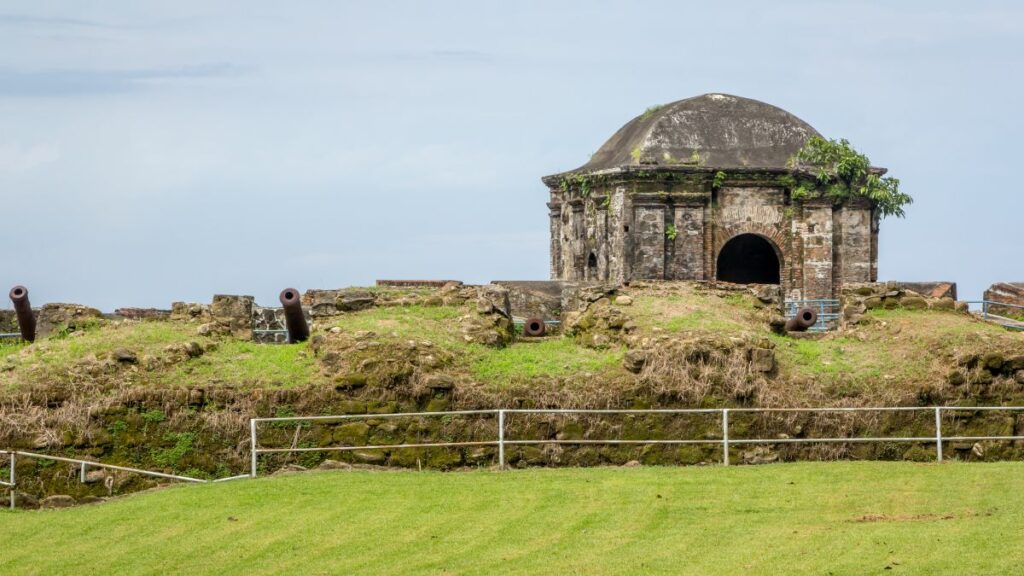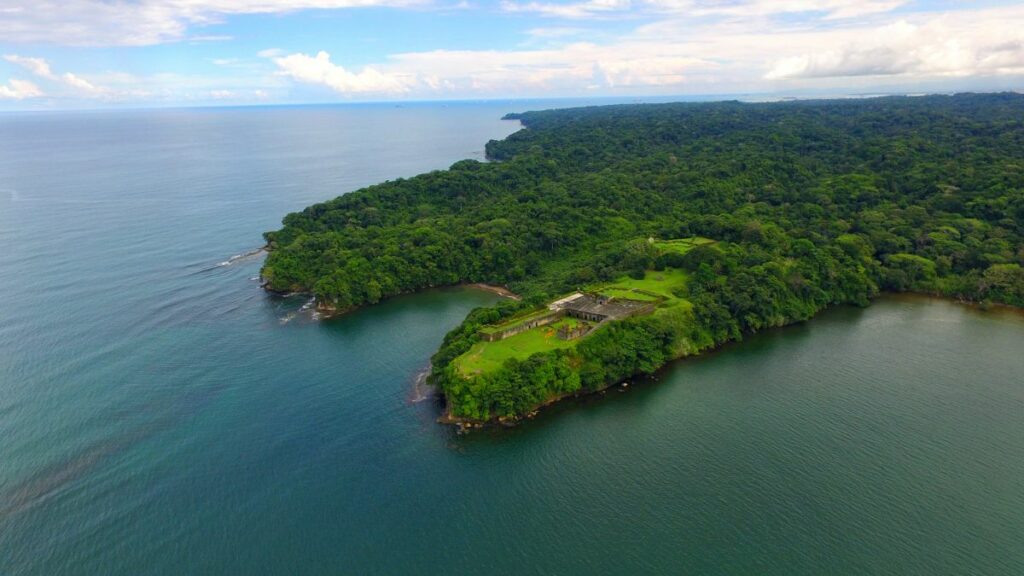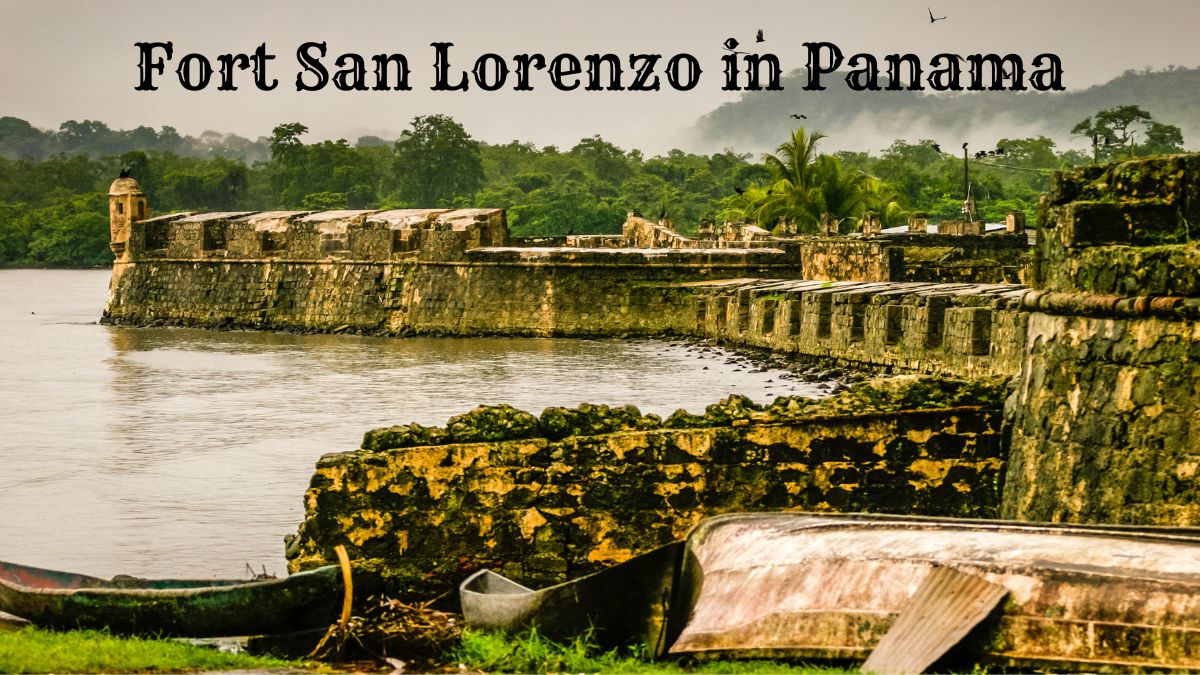Fort San Lorenzo in Panama captures the colonial era’s historic battles and strategic defenses.
Perched on a cliff overlooking the mouth of the Chagres River, this fortress was a crucial point of defense for the Spanish Empire.
Built originally in the 16th century and reconstructed in the 17th century, the fort was designed to protect against pirate attacks and secure the precious cargo of gold and silver flowing from the New World to Europe.
Fort San Lorenzo in Panama

Fort San Lorenzo’s prominent role in the region’s history has earned it a place on the UNESCO World Heritage Site list, which recognizes its value and ensures its preservation for future generations.
The site’s location was selected for both defensive and logistical reasons. It offers a clear view of the Caribbean Sea and any approaching threats.
Throughout its history, the fortress has witnessed numerous conflicts and has been captured and recaptured by various forces.
These skirmishes and changes in control reflect the volatile nature of colonial maritime commerce and the lengths to which empires went to protect their interests.
Fort San Lorenzo in Panama has a rich historical importance, reflected through its Spanish colonial military architecture, resilience in numerous conflicts, and strategic role in controlling regional waterways.
Explore More: Historic Forts in Bermuda
Spanish Colonial Military Architecture
Fuerte San Lorenzo, constructed on the orders of King Philip II of Spain in the late 16th century, is an exemplar of the era’s military design.
Its strategic position atop a cliff overlooking the Caribbean Sea at the mouth of the Rio Chagres allowed the Spanish Empire to protect the precious cargo ships carrying riches from the South American colonies.
- Construction: Completed during the 17th century with enhancements over time.
- Location: Served as a critical defender on Panama’s Caribbean Coast and Portobelo Bay’s fortifications.
- Design: Included a customs house and a complex defensive line against threats.
Battles and Sieges
Fort San Lorenzo has been constantly attacked throughout its history, notably enduring sieges from pirates and adversaries of the Spanish Crown.
- 16th and 17th Centuries: English pirates Sir Francis Drake and Sir Henry Morgan led numerous attacks.
- 18th Century: Fort sustained considerable damage during an assault by British Admiral Edward Vernon in 1740.
- Defenses: The fort’s Spanish troops often maintained control despite repeated sieges.
Control of the Waterway
The fort’s placement allowed it to command entry to the Chagres River, a crucial part of the transatlantic trade routes and transporting gold and other resources.
- Strategic Importance: Vital for protecting the fluvial path leading to Panama City and the Pacific Ocean.
- Gold Rush: Played a significant role during the Gold Rush, transporting Inca gold.
- Legacy: Today, it is recognized as a historical site acknowledging the fort’s role in shaping regional commerce and defense.
Ecology and Conservation

The section on Ecology and Conservation discusses Fort San Lorenzo’s diverse ecosystem and initiatives to preserve this significant ecological zone on the Caribbean coast of Panama.
San Lorenzo Protected Area
Location and Importance: The Fort San Lorenzo site is part of a larger protected area on the Caribbean side of Panama, which is a crucial component of the Mesoamerican Biological Corridor.
This strategic waterway, including areas around Gatun Lake and the broader isthmus of Panama, is vital for biodiversity.
Conservation Status: As a protected region, San Lorenzo helps to maintain ecological balance and preserve various species that inhabit this tropical forest landscape.
Flora and Fauna
Biodiversity: The area showcases a vast range of plant species characteristic of the tropical forest biome.
The forested area surrounding Fort San Lorenzo is home to diverse wildlife, including species endemic to the Caribbean coast of Panama.
- Examples of Fauna: The region shelters mammals such as howler monkeys and white-faced capuchins, as well as birds like toucans and various species of parrots.
Threatened Species: Efforts are ongoing to monitor and protect the local wildlife, especially species considered vulnerable or at risk of becoming endangered.
Environmental Protection Efforts
Ongoing Initiatives: Authorities and conservation organizations have initiated numerous projects to preserve the natural environment around Fort San Lorenzo.
These include habitat restoration and anti-poaching measures.
- Eco-friendly Practices: Guidelines are in place to minimize human impact, especially along walking trails and within forested areas.
- These promote eco-tourism that respects the natural habitat.
Collaboration: Collaboration between local communities, NGOs, and the government strengthens environmental stewardship.
This ensures the integrity of this part of the Mesoamerican Biological Corridor remains intact.
Education and Research: Research and educational programs that aim to understand the ecosystem’s dynamics are essential to ongoing conservation efforts.
They provide a basis for informed environmental management.

Cory is a website owner and content creator who enjoys fishing, history, coin collecting, and sports, among other hobbies. He is a husband and father of four.
Romans 15:4 For whatever was written in former days was written for our instruction, that through endurance and through the encouragement of the Scriptures we might have hope.

